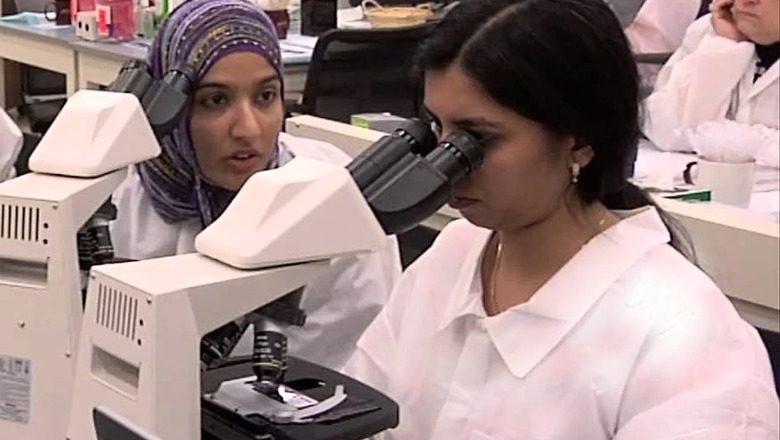
views
New Delhi: Nearly all medicines used by humans have been tested only on male animals, ignoring, for historically, the differences of female physiology.
This is but one example that Dr. Vidita Vaidya came up with, to explain the lack of women's’ perspective in science labs and in the course of research.
Vaidya, an award-winning neuroscientist and professor with the Tata Institute of Fundamental Research (TIFR), Mumbai, has signed on with a new global collective that wants to change this egregious lack of women in science. Rather, 500 women scientists point out that women in science, technology, engineering and mathematics (STEM), are present but invisible, and they want to alter that.
“No one should have that convenient excuse that they don’t know any women scientists or women experts to speak to,” said Vaidya, who signed up after finding the organisation on Twitter. For her, the most obvious trigger was the prevalence of ‘manels’ -- all male panels -- at most science conferences. “Young female graduate students look at these panels and wonder, where are the women in our field,” said Vaidya, who mentors many such students and sees the challenges they face at every step.
Those looking for women experts to speak on panels or to journalists can now use the collective’s plainly named resource tool ‘Request a Woman Scientist’. After, FEBS Letters, a highly prestigious peer-reviewed scientific journal invited only one woman to be part of their panel celebrating their 50th anniversary last year, such a tool seems necessary.
'500 Women Scientist' was formed by four women at the University of Colorado, Boulder, in the United States, as facts, research and the idea of science came under attack by the Trump presidency. It acts both as a global organisation and a grassroot collective promoting diversity, by fostering “real change that comes from small groups, not large crowds”.
It functions through Local Pods, local groups within the larger hive, which are supposed to meet and organise themselves. However, of the 20,000 women that have signed on from 100 countries, only four, at the last count, are from India.
This could be, as Vaidya points out, because the science community as a whole is not so active online. There’s only a “bunch of people” who is engaging with the public and trying to make science part of mainstream discourse. This is unfortunate as India is a difficult place for a woman in STEM field.
According to a UNESCO survey from 2017, only 14 percent of women in India are researchers, against a global average of 28.4 percent. President Kovind, too, pointed out last year that women were only 10 percent of the applicants to the various branches of the Indian Institute of Technology, and even that number dropped among PhD and Postdoctoral candidates.
Another survey, by the Kelly Global Workforce Index (KGWI) said that 81 percent of women in STEM, in India, perceived a gender bias in performance evaluation.
“One can, more easily, call out the obvious biases. It’s the insidious ones that are scary,” said Vaidya. Most letters of recommendation (LoR) for women, she gave an example, used words such as supportive, helpful or cooperative, instead of brilliant, forming the impression that the woman candidate will be a supportive member of a team instead of the one blazing the trail.
These letters, written with the intention to help the woman, end up handicapping her instead.
Vaidya’s experiences are testimony to data that reveal that as women go up the education ladder, they often opt out of pure research to become doctoral students.
She’s seen bright women students at doctoral level having to fight through or succumb to family pressures and anxieties over their going abroad for research work.
“Most parents are ready to accept all challenges of such a life for their sons,” said Vaidya,” but not for their daughters”. Or, women don’t want to face the loneliness of such a life. There are, now, a number of women in biological sciences, but what does one do as the lone woman researcher in a Physics department, she asked. Will her work be taken seriously, will there even be a women’s bathroom in her department -- these are everyday worries.
This is how science has lost out, historically, on different perspectives that could be offered by 50 percent of the human population, said Vaidya, going back to her earlier example of medicine testing.
Only in the past few years, she added, did the US National Institute of Health understand that female physiology too matters, and said that all testing must be done on male and female animals.

















Comments
0 comment